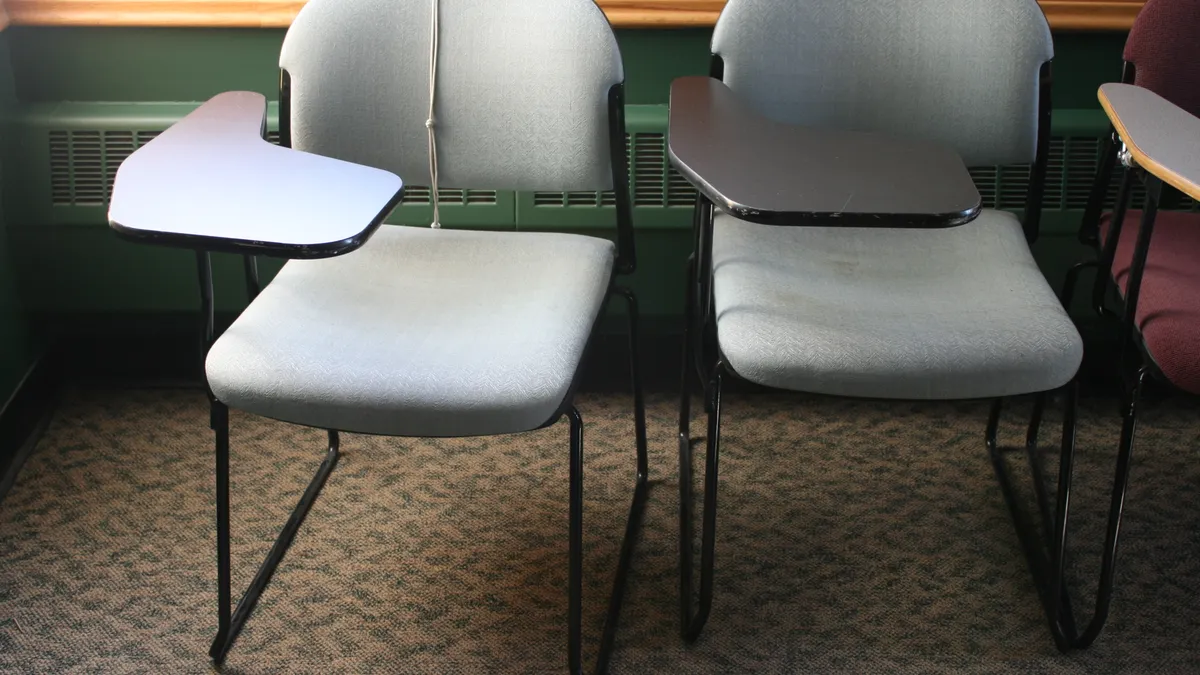Dive Brief:
- A spike in unexplained school absences during the pandemic could lead to truancy troubles for thousands of students impacted by factors ranging from homelessness to lack of home internet access, The 74 reports.
- Before the COVID-19 pandemic, a disproportionate number of low-income students and students of color were sent to juvenile court for truancy infractions. Now, schools struggling to account for chronically absent students who have gone "missing" from their enrollment counts during distance learning are trying to avoid using the legal system.
- Some advocates say the time has come for a shift from harsh punishments for truancy problems to more positive reinforcements. Texas, a state long known for being tough on truant students, is cited as being ahead of the curve on such a move, having decriminalized truancy in 2015.
Dive Insight:
Despite the fact many schools have been closed to in-person learning since March, states maintain compulsory education laws that can lead to fines, probation and — in some states — jail time.
Likewise, chronic absenteeism has become a focus in accountability metrics nationwide as it can indicate students are at higher risk of dropping out or of being funneled into the criminal justice system. However, some research suggests punitive attendance measures only make truancy problems worse.
Distance learning and the challenges families have faced during the coronavirus pandemic complicate the truancy problem. Student absences have almost doubled, with teachers reporting 10% of their students are absent on any given day. And while much of the current absenteeism focus is on students in distance learning situations, the rate is up even for those students who are attending school in-person.
School funding in many states is tied in part to daily attendance, raising concerns among education leaders that missing students might impact budgets once state flexibilities expire.
In an effort to hold distance learning students accountable for attendance, some districts are using "coaches" to take attendance and guide students through the day, transitioning them from one teacher to the next and communicating with students to keep them engaged during “passing” time. This strategy emerged after administrators noticed attendance began to lag later in the day.
Attendance is also more difficult to track during the distance learning era because there is no standard metric for what constitutes attendance in a remote environment. During in-person learning, a student is considered in attendance if they are physically in class. In an asynchronous distance learning model, however, students can log in anytime and from anywhere.
Still, tech troubles can also dog students wherever they are. They can lose their internet connection, have technical issues that prevent them from logging on, or the system may not allow them into the class until after a teacher has already taken attendance. Even if a student is logged on, measuring engagement beyond their online "presence" can still be difficult, as some students may be uncomfortable turning their cameras on.






 Dive Awards
Dive Awards







